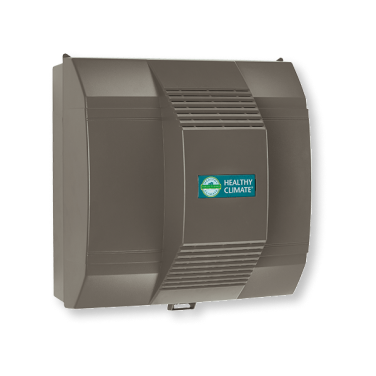Many households in Chandler, AZ, use whole-home humidifiers to tackle the region’s extremely dry climate challenges. If you want to start enjoying healthier air in your home as well, it’s time to install a home humidifier with Hicken Air. We will gladly show you all our available models. We also assist customers in repairing and maintaining their home’s humidification systems.
Whole House Humidifiers in Chandler, AZ
Reme Halo Air Purifier

Can Whole-Home Humidifiers Help?
People in this part of the country often experience the effects of dry air, even when they don’t realize that dryness is the cause. Dry air creates static electricity, which can damage electronics. Wooden floors and furniture can crack because of the severe dryness of the air as well. Houseplants may struggle to survive due to excessive evaporation.
Many people experience reduced sleep quality when nasal and throat discomfort interrupts their rest. Dry air can also contribute to dehydration. Moist air within the ideal target range of 30% to 50% feels warmer and enhances comfort during sleep.
A modern home humidifier maintains relative humidity levels within the ideal range. Levels below 30 percent create uncomfortably dry air, while keeping it below 50 percent helps prevent mold growth. For greater control, you can also use a dehumidifier on those rare humid days.
A whole-house humidifier integrates well with existing HVAC units. Some models include bypass humidifiers that dedicate a specific duct to heating an evaporator pad, providing a cost and energy-efficient solution to adding whole-home humidification without requiring extensive HVAC retrofitting.
Most whole-home humidifiers support smart HVAC controls, allowing you to customize settings based on your household needs. Many models can also work with your home’s HVAC system, turning on when the air circulates. A built-in humidistat provides precise control of humidity levels, similar to how a thermostat regulates your home’s temperature.
- Coughs and dry throat
- Respiratory irritation
- Increased cold and flu risk
- Dry skin and hair
- Red eyes

Purchase a Quality Home Humidifier in Chandler
Hicken Air has provided high-quality HVAC solutions to Chandler residents since 2009. As a family-owned business, we have built a rock-solid reputation by delivering reliable and efficient solutions. We offer financing for installations with credit approval and provide online promotions that help lower the costs of a home humidifier. Inquire about our air conditioning and heating systems, including heat pumps. We actively address indoor air quality concerns with effective air purification systems. Our Chandler HVAC company backs every project with a 30-day labor guarantee.
Ready to look at whole-home humidifiers for your Chandler residence? Contact Hicken Air today!
